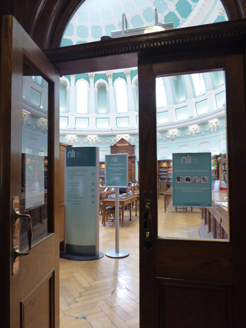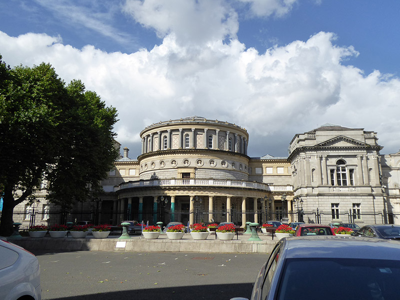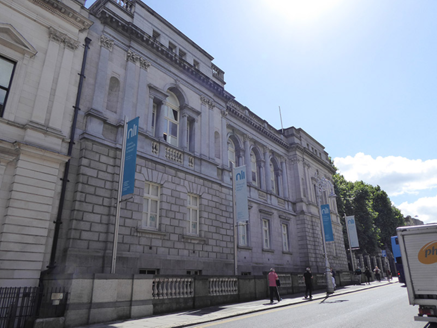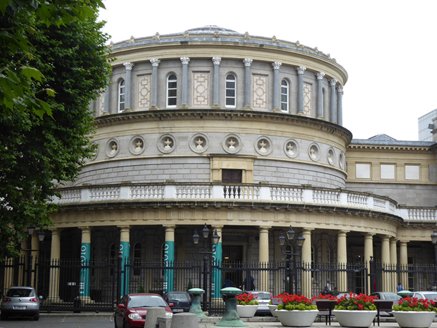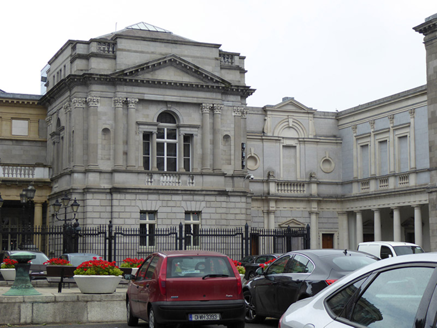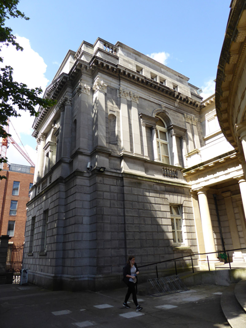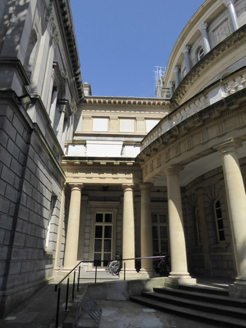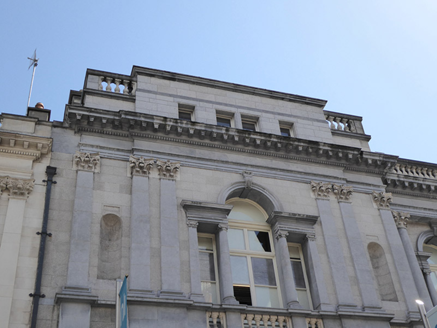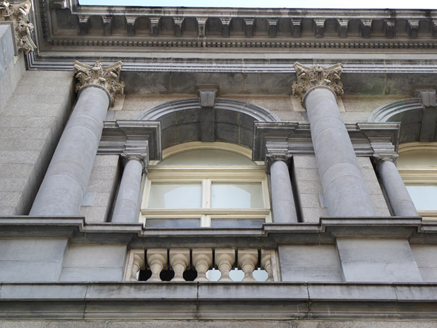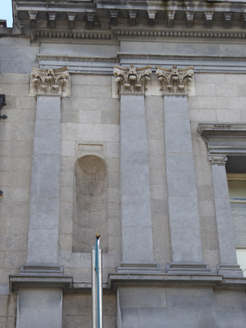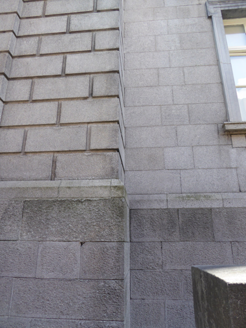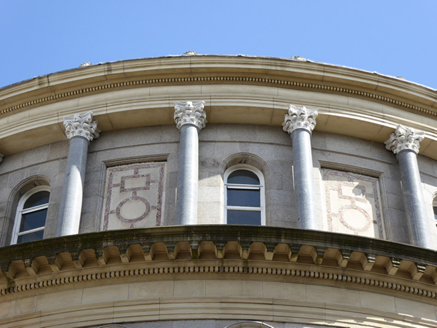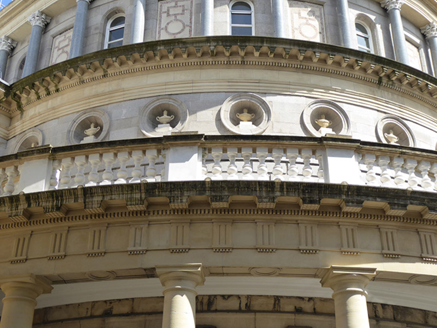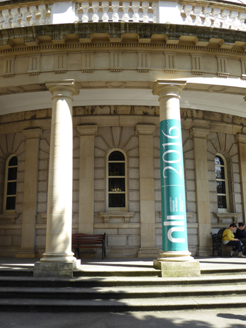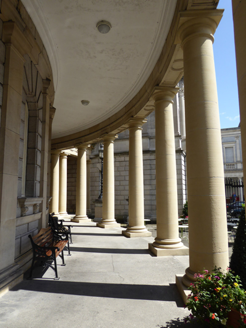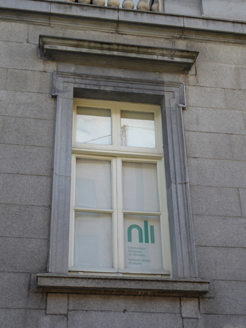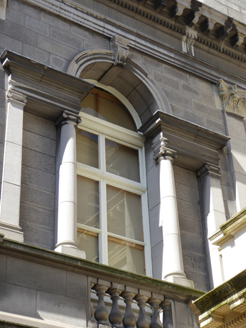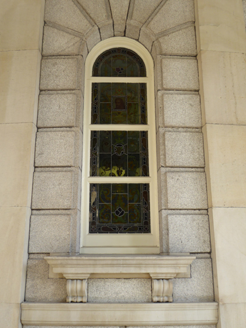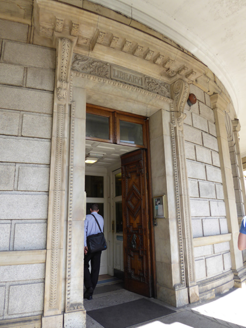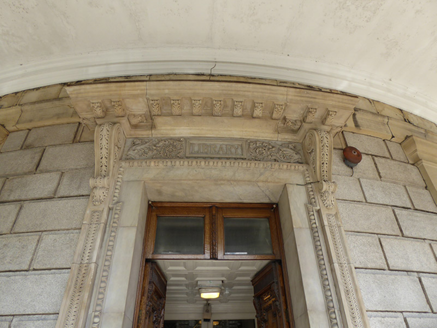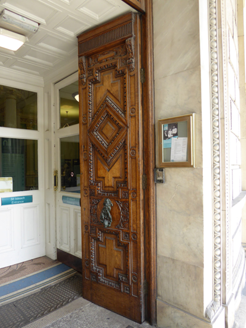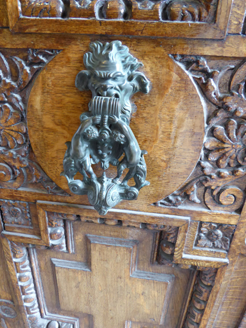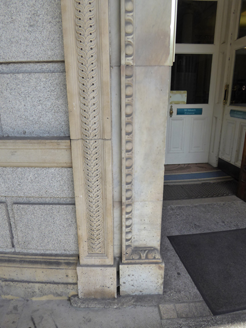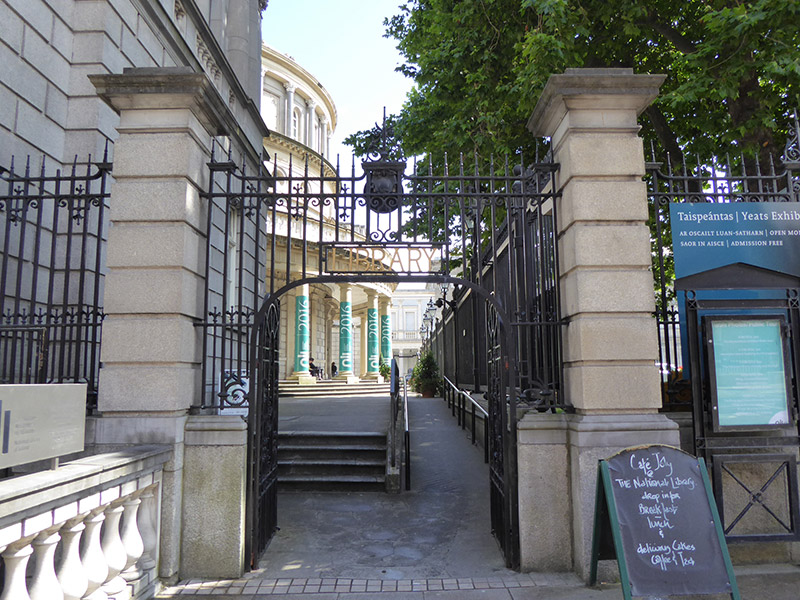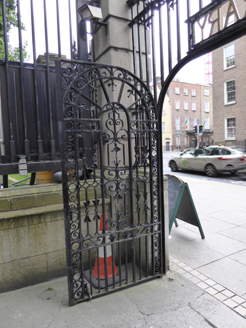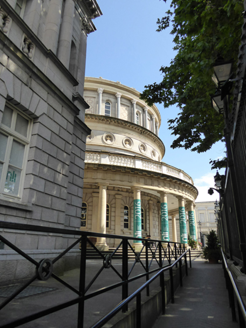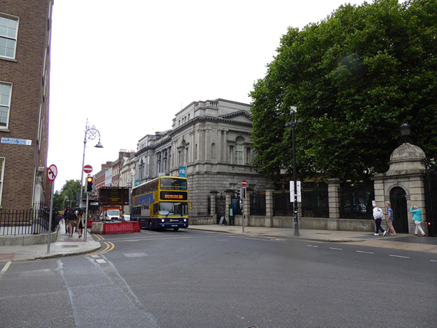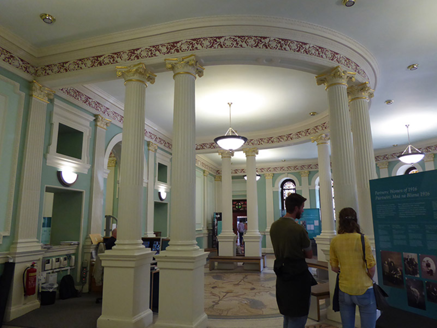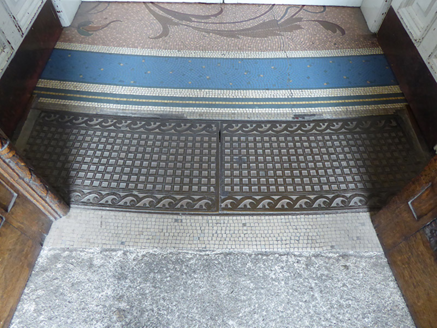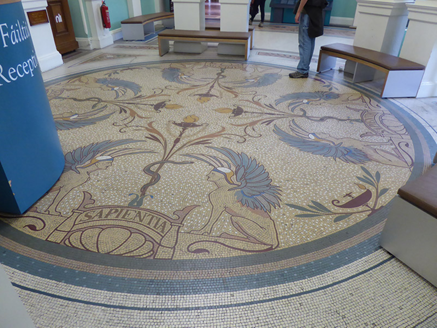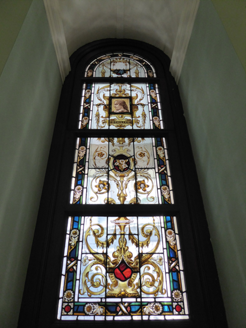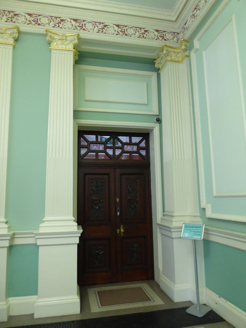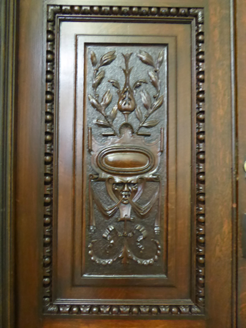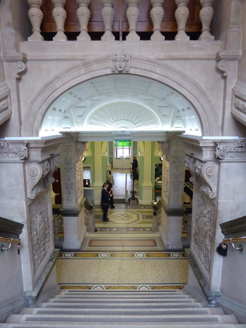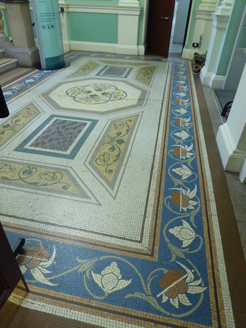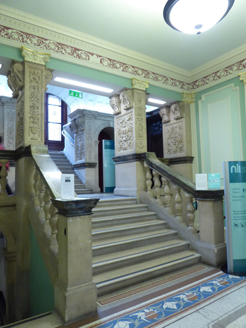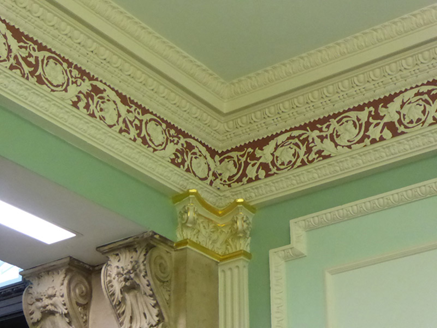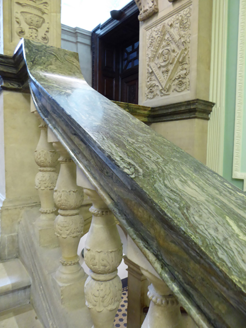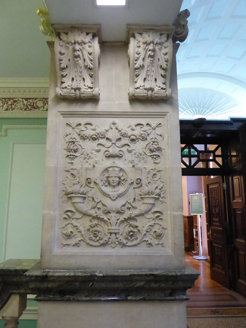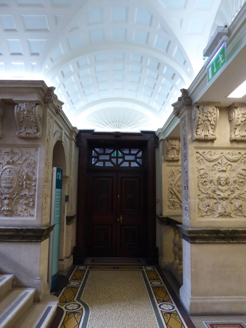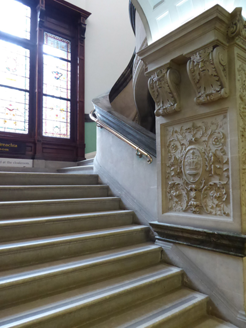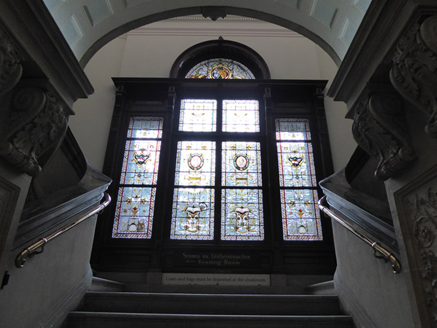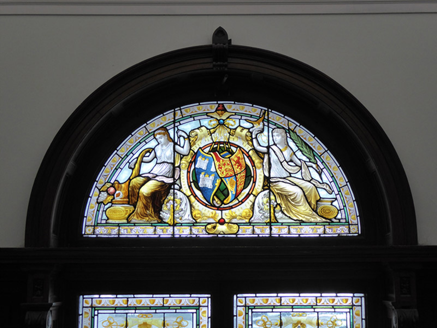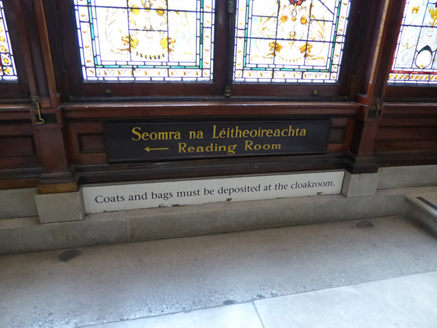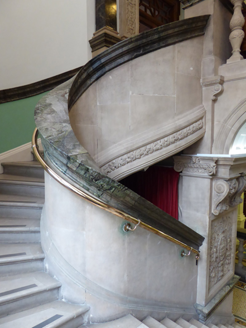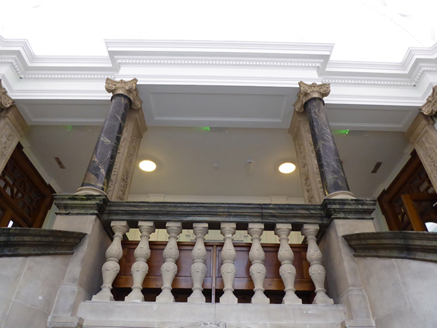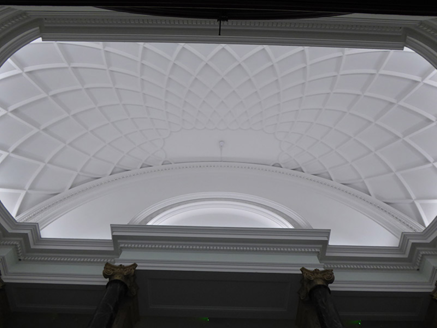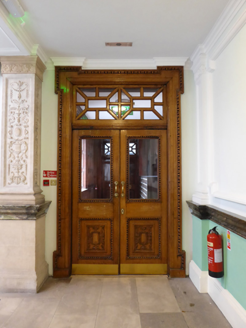Survey Data
Reg No
50100219
Rating
National
Categories of Special Interest
Architectural, Artistic, Cultural, Social, Technical
Original Use
Library/archive
In Use As
Library/archive
Date
1880 - 1895
Coordinates
316312, 233712
Date Recorded
08/08/2016
Date Updated
--/--/--
Description
Attached symmetrical E-plan library over raised basement, built 1885-90, facing south and comprising three-stage U-plan rotunda with top storey set back and lower floors flanked by two-storey link blocks flanked in turn by two-storey pavilions each with set-back attic storey and projecting so as to be slightly forward of rotunda, and with concentric half-round-plan flat-roofed Doric colonnade to front of rotunda. Symmetrical west elevation (to street) has seven-bay ground floor, middle three bays slightly recessed, and end bays projecting and having same form and detailing as pavilions (south bays are also west elevation of west pavilion). Link blocks have two-bay ground floor and multiple-bay first floor. Hipped slated roofs with rooflights over west block and southeast pavilion, and leaded roof to rotunda. Balustraded parapets to west elevation and to colonnade, with modillioned cornice. Ashlar granite walling, channel-rusticated to ground floor of pavilions, yellow sandstone dressings to link blocks and rotunda. Brown and red brick storage addition to northeast. Front elevations of pavilions have pediculate pedimented breakfronts to first floor, with moulded friezes atop engaged Corinthian columns; similar pilasters to corners and to side elevations; all elevations of pavilions having moulded stringcourses, and round-headed niches flanking Venetian windows and having recessed panels above; attic storeys being four-bay to side elevations; and with balustrading to corners. First floor of rotunda has rusticated stonework with moulded stringcourse above, with ashlar frieze detailed with roundels having with moulded surrounds and containing urns, with moulded bands above and topped by plain frieze and modillioned cornice. Top storey of rotunda has alternating round-headed window openings and geometric cream-and-yellow marble panels, separated by engaged Corinthian columns, with moulded frieze above and topped by moulded cornice with antefixa. Colonnade has triglyph frieze and balustrade, returning at each side to meet pavilions, with rusticated base. Venetian windows and round-headed window openings to first floor of recessed bays have moulded imposts and archivolts with carved keystones and supported on composite Ionic colonnettes to jambs of round-headed lights and with similar pilasters to outer jambs elsewhere; openings to recessed bays are flanked by engaged Corinthian columns. Sill level to all of first floor has balustrading to front of openings. Square-headed window openings to ground floor and to basement, with plain surrounds to basement and to ground floor of projecting bays, lugged architraves and moulded cornices to recessed bays of west elevation and to link blocks, with timber French doors to latter, and timber casements elsewhere. Ground floor of rotunda has round-headed stained-glass windows with channelled surrounds and voussoirs and moulded sills on paired scrolled brackets. Square-headed principal doorway to front of rotunda, with carved lugged sandstone architrave with egg-and-dart-moulded surround, flanked by panelled pilasters with guilloche decoration and having ornate scroll consoles supporting ornate modillioned canopy, deeply carved timber double-leaf door with twin overlights and ornate bronze pull-handles. Frieze over doorway decorated with vegetation to each side of moulded plaque bearing lettering 'Library'. Square-headed to first floor of rotunda, having stepped cut sandstone surround with double-leaf timber panelled door flanked by pilasters. Interior has original layout and detailing intact, richly decorated throughout. Entry into half-round pilastered entrance hall with plaster panels, Rococo plasterwork frieze to run cornice, and stained-glass windows. Ornate mosaic flooring throughout entrance hall, stairs hall and landings. Internal half-round-plan Corinthian arcade to centre leading to stairs hall, accessed via round archway. Polished timber internal doors, some carved, having overlights. Bifurcated stone staircase, landing carried on Rococo-carved composite stone piers with dressings and handrail of green marble, with curved flights to upper landing level, panelled and fanned barrel-vaulted plaster ceilings to side rooms at first half-landing, top landing has geometric traceried plaster ceiling over dentillated entablature on marble columns. Stairwell lit by stained-glass Venetian window with ornate timber architrave. Timber panelled lobby and parquet floor to double-height main reading room accessed from top landing. Reading room has plaster frieze with putti beneath inclined Corinthian pilasters dividing alternate windows and niches, and coffered dome. Original timber shelving and carved librarians' desks. Narrow curtilage to south, accessed by decorative cast-iron gates having lettering 'Library' to railings overhead. Basement area to street enclosed by granite wall with plinth and coping and having Portland stone balusters. Library sited at north side of forecourt to Leinster House, with National Museum on opposite side.
Appraisal
The National Library built between 1885 and 1890 is part of a larger complex of state and cultural buildings located on Kildare Street, all in the classical style. Representative of the liberalizing attitudes underpinning late nineteenth-century social reform, with an increased emphasis on public benefit, the library has its origins in the Dublin Science and Art Museum Act, 1877. The building encloses the north side of a large forecourt formed by it, the Museum opposite and Leinster House. The competition for the design of the Library and Museum was one of the great architectural controversies of the nineteenth century, reflecting the growing national consciousness. Following two competitions the successful winners were Thomas Newenham Deane and his son Thomas Manly Deane. The composition is impressive in its own right, an effect magnified when the complex as a whole is considered. The symmetrical south elevation is strongly articulated with pavilions and a central colonnaded rotunda, directly mirroring the Museum. Venetian and Renaissance embellishments are enhanced by the use of polychromy, the external use of which had gained increasing popularity in the nineteenth century. The principal material is granite, enlivened by yellow sandstone, marble panelling, and composite stone. The interior is well preserved and contains a wealth of decorative fixtures and finishes, showcasing the best of late Victorian Irish craftsmanship, including decorative plasterwork, wood and stone carving, and mosaic work. It culminates in the half-domed main reading room, an impressive coffered space retaining original fittings. As well as housing an internationally important collection, the library provides the setting for the ‘Scylla and Charybdis’ episode of Joyce’s novel, Ulysses.
